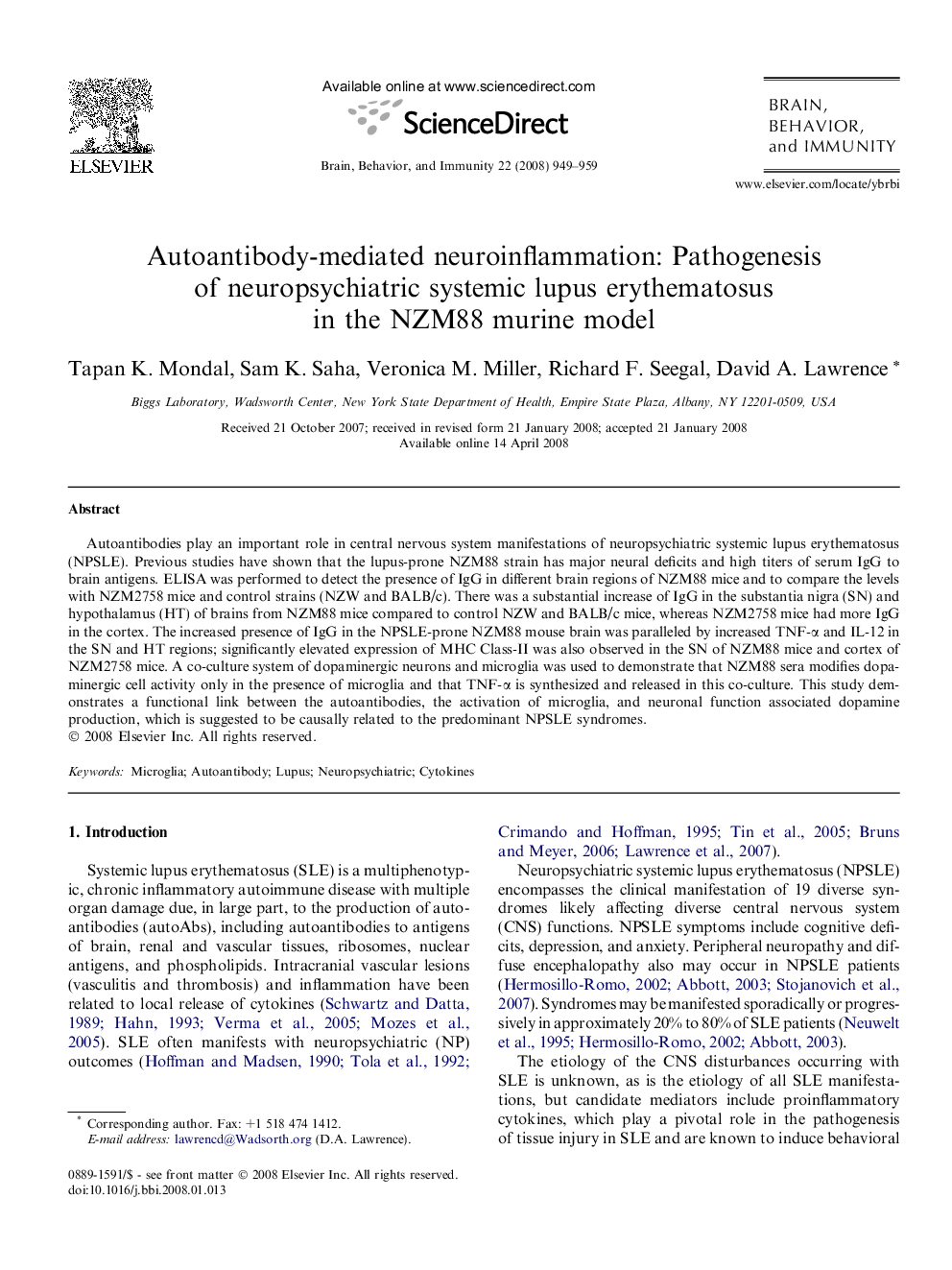| Article ID | Journal | Published Year | Pages | File Type |
|---|---|---|---|---|
| 923724 | Brain, Behavior, and Immunity | 2008 | 11 Pages |
Autoantibodies play an important role in central nervous system manifestations of neuropsychiatric systemic lupus erythematosus (NPSLE). Previous studies have shown that the lupus-prone NZM88 strain has major neural deficits and high titers of serum IgG to brain antigens. ELISA was performed to detect the presence of IgG in different brain regions of NZM88 mice and to compare the levels with NZM2758 mice and control strains (NZW and BALB/c). There was a substantial increase of IgG in the substantia nigra (SN) and hypothalamus (HT) of brains from NZM88 mice compared to control NZW and BALB/c mice, whereas NZM2758 mice had more IgG in the cortex. The increased presence of IgG in the NPSLE-prone NZM88 mouse brain was paralleled by increased TNF-α and IL-12 in the SN and HT regions; significantly elevated expression of MHC Class-II was also observed in the SN of NZM88 mice and cortex of NZM2758 mice. A co-culture system of dopaminergic neurons and microglia was used to demonstrate that NZM88 sera modifies dopaminergic cell activity only in the presence of microglia and that TNF-α is synthesized and released in this co-culture. This study demonstrates a functional link between the autoantibodies, the activation of microglia, and neuronal function associated dopamine production, which is suggested to be causally related to the predominant NPSLE syndromes.
